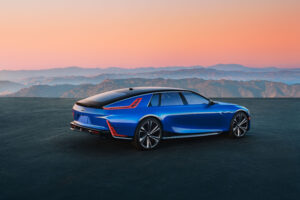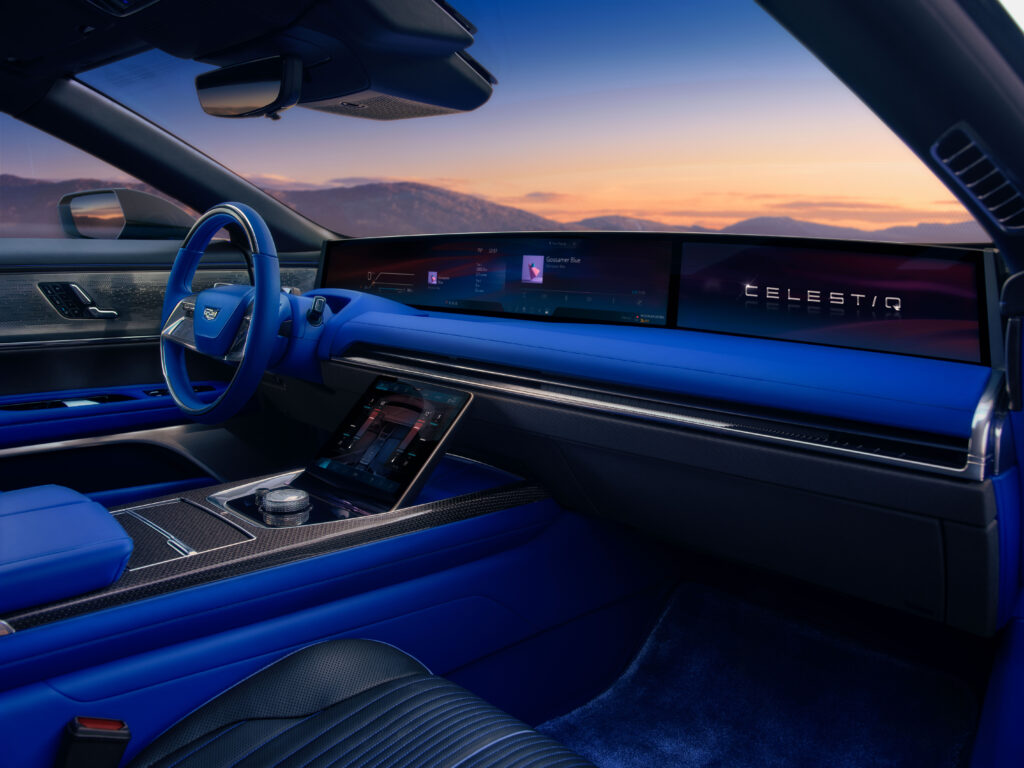
Cadillac’s CELESTIQ 3D-printed parts won’t have major impact on collision repairers
By onCollision Repair | Technology
Cadillac says it has “drawn from every era and element of its rich heritage to deliver the most advanced, most luxurious, and one of the most important vehicles the brand has ever produced” in producing the CELESTIQ, which includes 115 3D-printed parts.
The vehicle is Cadillac’s flagship all-electric model and is slated for production in beginning in December 2023, with an expected MSRP to begin north of $300,000.
Repairer Driven News asked General Motors if specifications for the 3D-printed parts will be provided to dealerships so they can be produced locally or if they’ll come from a national warehouse. Spokesperson Katie Minter said while additive manufacturing is “a great addition” to GM’s ability to create parts across its supply base, the process isn’t as simple as printing parts and putting them on the vehicle.
“For example, to achieve the desired finish on a component used for some 2022 Chevrolet Tahoes, our supplier used a technique called ‘vapor polishing,'” she said. “The Celestiq’s 3D-printed metal steering wheel décor comes out of the printer requiring additional finishing work as well. Due to the processes required for final parts, replacements cannot be printed at a dealership.”
Most of the other 3D-printed parts are small brackets, trim pieces, window switches, grab handles, console décor, and structural pieces.
Each CELESTIQ is personally commissioned through client-dealer work with Cadillac designers “to realize their unique vision for the car, with unprecedented levels of personalization tailored to reflect the owner’s tastes,” a recent news release from the OEM states.
“CELESTIQ is like no Cadillac before it and the client experience is equally exceptional,” said Global Vice President of Cadillac Rory Harvey, in the release. “Each vehicle is a unique expression of its owner, leveraging leading-edge technologies that make the driving experience personal and rewarding.”
Minter told RDN Cadillac chose to use 3D-printed parts on the CELESTIQ “to leverage Cadillac’s legacy of craftsmanship and innovation” and “create a truly bespoke experience.”
“3D printing enables details hard to achieve in mainstream production methods,” she said. “Whether 3D printed or not, every component on a GM vehicle is developed to meet specific requirements, and we have a vast range of suppliers and processes to meet those requirements, including additive manufacturing, stamping, casting, and injection molding.
“The benefits of 3D printing depend on the specific application. In some situations, the lack of tooling required for additive manufacturing is a cost benefit for low-volume parts applications. In fact, additive parts helped enable the Cadillac CT4-V and CT5-V Blackwing to offer a manual transmission. In other cases, the benefit is speed, or customizability. In applications like motorsports, 3D printing allows forms not possible with other processes, like more complex internal cooling channels. Additive manufacturing isn’t the right answer to every engineering question, but we’re fortunate to have a great team at our Additive Industrialization Center working with our broader design and engineering teams to determine where it’s the right application.”
The OEMs’ move to use 3D-printed parts wasn’t in response to supply chain shortages and delays in getting parts, according to Minter.
Minter told RDN there shouldn’t be any major impact to collision shops in repairing CELESTIQs, and specifically with 3D-printed parts, “3D printing allows us to do new and interesting things but the final result is really the same,” she said.
“In a lot of cases, a repairer may not even know a part is 3D printed. A damaged component like a bracket will behave and crack like any other plastic or polymer part and require a replacement. The metal 3D printed parts are primarily interior trim pieces less prone to collision damage – the steering wheel component, window switches, and seat belt buckles. It’s also worth noting that 3D-printed components continue to represent a small percentage of production parts. The Cadillac CELESTIQ and the Blackwing vehicles are low-volume models. The fullsize SUV component referenced was a bridge solution and replacement parts offered are injection molded.”
Each CELESTIQ customer will receive “a highly personalized experience” led by their chosen dealer in collaboration with a one-on-one concierge to guide them and access to a Cadillac designer and exclusive services, the OEM says.
“With an extremely low volume of hand-built vehicles to be offered globally each year and an exclusive declaration process, CELESTIQ will truly be a custom-commissioned one-of-one,” Harvey said, in the release. “Each client will experience a personalized journey to make their vehicle exactly the way they desire.”
Each CELESTIQ is built on GM’s Ultium Platform, which combines a 111-kilowatt hour (KWh) battery pack and a two-motor, all-wheel-drive propulsion system to offer a GM-estimated 600 horsepower, 640 lb-ft of torque, and driving range of 300 miles on a full charge. The CELESTIQ’s battery cells are mounted horizontally and the low mounting position of the pack drops the vehicle’s center of gravity to enhance handling and ride comfort and maximize interior spaciousness, according to Cadillac. It will also include Demand Braking and One-Pedal Driving; the latter meant to slow the vehicle to a complete stop using only the accelerator.
Other features include:
-
- Adaptive Air Suspension;
- Active Rear Steering;
- Magnetic Ride Control 4.0 suspension technology;
- Advanced AWD;
- Active Roll Control through the use of stabilizer bars embedded at the front and rear of the chassis to mitigate the rolling force exerted on the vehicle;
- Active Rear Spoiler;
- Ride-focused tires;
- Electric Power Steering;
- 5-link front and rear suspension; and
- 200 kW DC fast charging system
Body construction
The CELESTIQ’s underbody includes six large precision sand-cast aluminum components, each reducing part count by 30 to 40 components, compared to typical stamped construction, according to Cadillac. Through its “flex fabrication” process, Cadillac will fold and manipulate metal sheets into unique shapes for the CELESTIQ, which will have more than 300 fabricated pieces throughout the body structure, chassis, interior and electrical components.
The EV’s “Fixed Smart Glass Roof” will feature Suspended Particle Device Technology, multi-color ambient lighting, and “lighting choreography” to “create a unique interplay between the exterior and the amount of light allowed into the cabin through the four-zone” roof. The lighting choreography begins when the key fob is 15 feet away from the vehicle by lighting up the front Cadillac Crest and the middle of the black crystal shield grille to the headlamps.
Carbon fiber comprises several areas of the exterior and an aluminum grille, header, rocker, taillamp and headlamp trim, brushed aluminum bodyside trim, aluminum eTrunk lining, and brushed metal liftgate body openings. There are no exterior door handles; instead, they’re opened and closed by pressing a button.
Beginning with CELESTIQ, Cadillac will introduce a new connected camera platform that includes interior and exterior cameras for theft detection and crash recording. CELESTIQs will also have Ultra Cruise – GM’s ADAS for “hands-free” driving.
Images
Photos of CELESTIQ provided by Cadillac.

